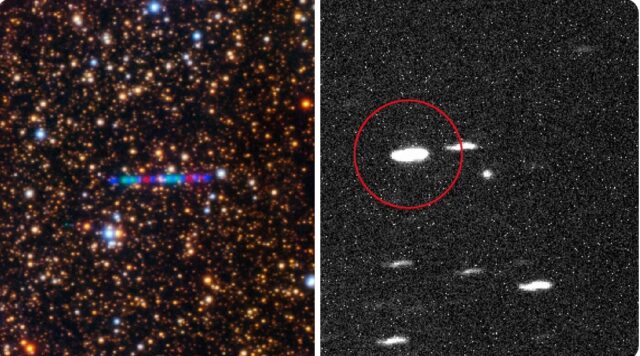“A mysterious intergalactic object could potentially be a hostile alien spacecraft that’s slated to attack our planet in November, according to a new study by a small group of scientists.”
On July 1, astronomers discovered an interstellar object, named 3I/ATLAS, hurtling toward the sun at over 130,000 mph, according to Live Science. Confirmed within 24 hours as an interstellar entity, initial observations suggest it could be a comet up to 15 miles wide, larger than Manhattan. However, a controversial study published on July 16 to the preprint server arXiv has raised speculation about its origins, proposing it might be an alien spacecraft.
The study, authored by Harvard astrophysicist Avi Loeb, along with Adam Hibberd and Adam Crowl from the Initiative for Interstellar Studies in London, suggests 3I/ATLAS’s high speed and unique trajectory could indicate extraterrestrial technology.
Loeb, previously known for linking the 2017 interstellar object ʻOumuamua to alien life, notes that 3I/ATLAS’s path allows close approaches to Jupiter, Mars, and Venus, potentially enabling the deployment of surveillance devices. The object’s closest approach to the sun in late November will obscure it from Earth’s telescopes, which Loeb suggests could be intentional to avoid detection.
The researchers reference the dark forest hypothesis, which posits that extraterrestrial civilizations remain hidden to avoid threats. They caution that if 3I/ATLAS is artificial, it could signal a need for defensive measures.
However, the object’s speed makes interception by Earth-based spacecraft impractical, as current rockets cannot match its velocity.
Other scientists dispute these claims, asserting that 3I/ATLAS is likely a natural comet. Samantha Lawler, an astronomer at the University of Regina, told Live Science that all evidence points to it being an ordinary comet ejected from another solar system.
Chris Lintott, an astronomer at the University of Oxford, dismissed the alien hypothesis as “nonsense” and emphasized ongoing global efforts to study the object using advanced telescopes.
The study’s authors acknowledge their hypothesis is speculative and not peer-reviewed, describing it as a testable but unlikely scenario. They encourage further analysis while noting the object is most likely a natural comet.















